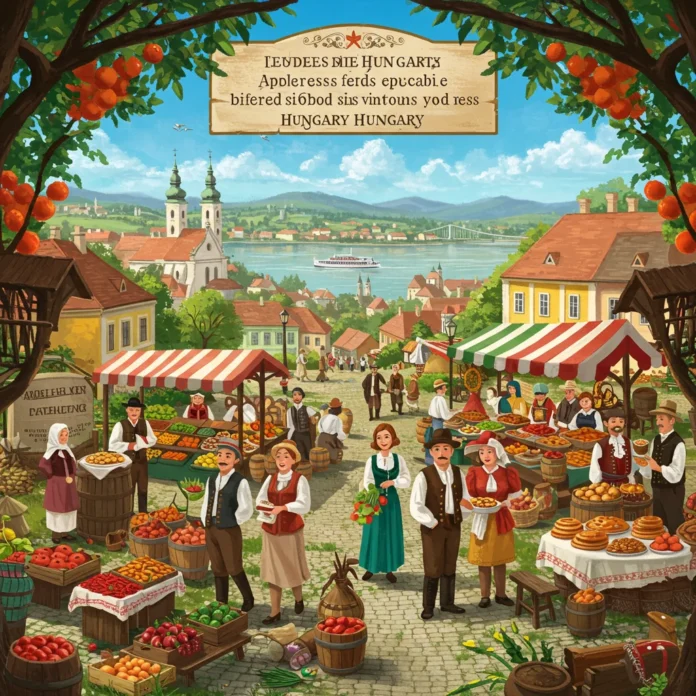Introduction: Exploring Hungary Beyond Budapest
Hungary often draws attention for its capital, Budapest, a city known for its grand architecture, lively culture, and historic baths. Yet, the country’s true character stretches far beyond the city limits. From rolling hills to shimmering lakes and charming villages, Hungary offers a wealth of experiences that many travelers miss if they focus solely on the capital.
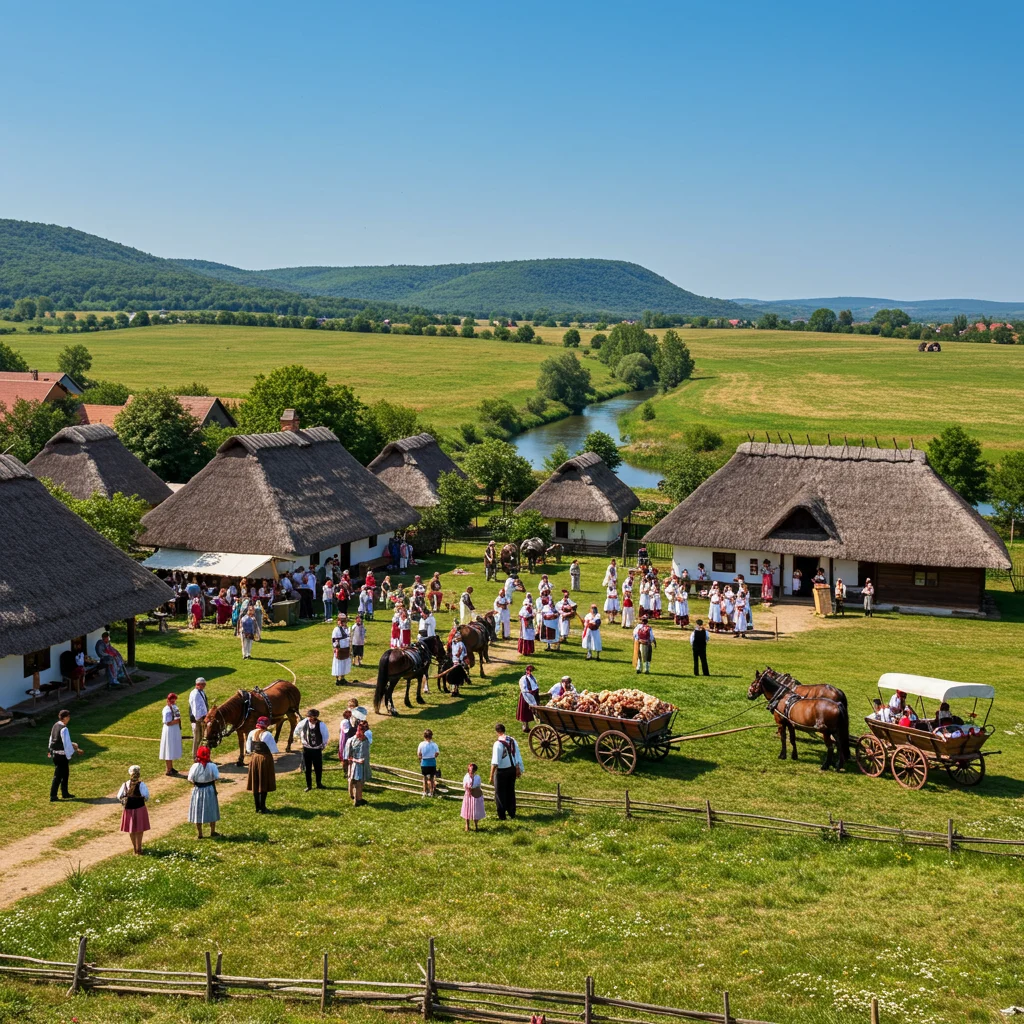
In this article, we guide you through Hungary’s diverse regions, highlighting the best destinations, activities, and practical tips. Whether you’re interested in wine regions, spa towns, or outdoor adventures, Hungary’s countryside promises a rewarding journey. Let’s set out to see what lies beyond Budapest’s iconic skyline.
Why Venture Outside Budapest?
While Budapest dazzles with its urban energy, Hungary’s regions provide a different perspective on the country’s soul. Rural landscapes, medieval towns, and centuries-old traditions offer a quieter, yet equally rich, travel experience. Here, you can connect with local culture, savor authentic cuisine, and relax in peaceful settings.
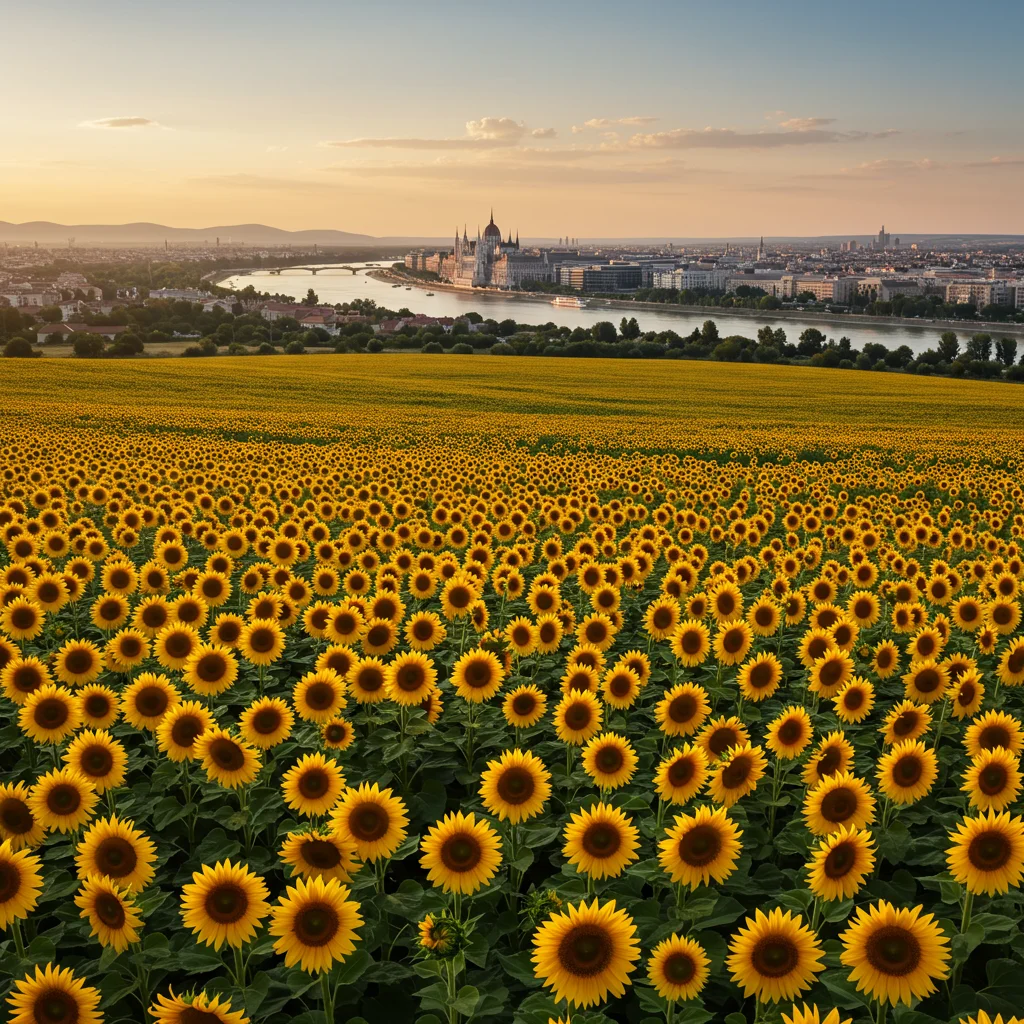
Leaving Budapest allows you to see Hungary’s natural beauty and historical depth up close. Regional festivals, unique culinary traditions, and outdoor activities all contribute to a well-rounded visit. For those who appreciate slower travel and authentic encounters, the countryside is where Hungary’s heart beats strongest.
Top Regions to Visit in Hungary
Hungary divides naturally into several distinct regions, each with its own character and attractions. From the volcanic hills of the north to the expansive plains of the south, every area has something unique to offer. Understanding these regions helps you plan a trip that matches your interests and pace.
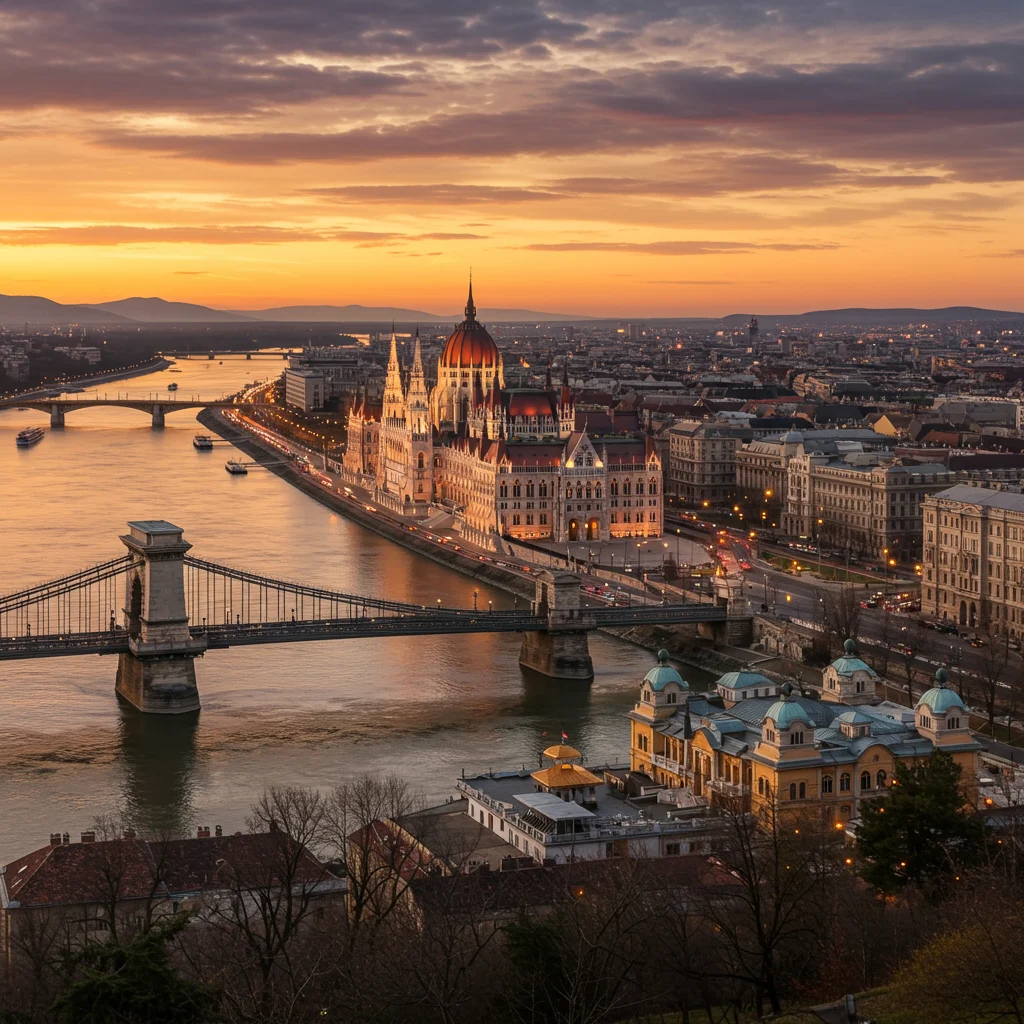
In the following sections, we highlight the most rewarding places to visit, from the wine cellars of Tokaj to the beaches of Lake Balaton and the historic spa towns of the west. Whether you prefer cultural landmarks or rural retreats, you’ll find plenty of inspiration for your Hungarian journey.
Northern Hungary: Mountains, Castles, and Wine
Northern Hungary appeals to those who appreciate scenic landscapes, rich history, and renowned wines. The region features charming towns, dramatic castles, and natural wonders such as caves and national parks. It’s an ideal destination for travelers seeking a mix of culture and outdoor recreation.
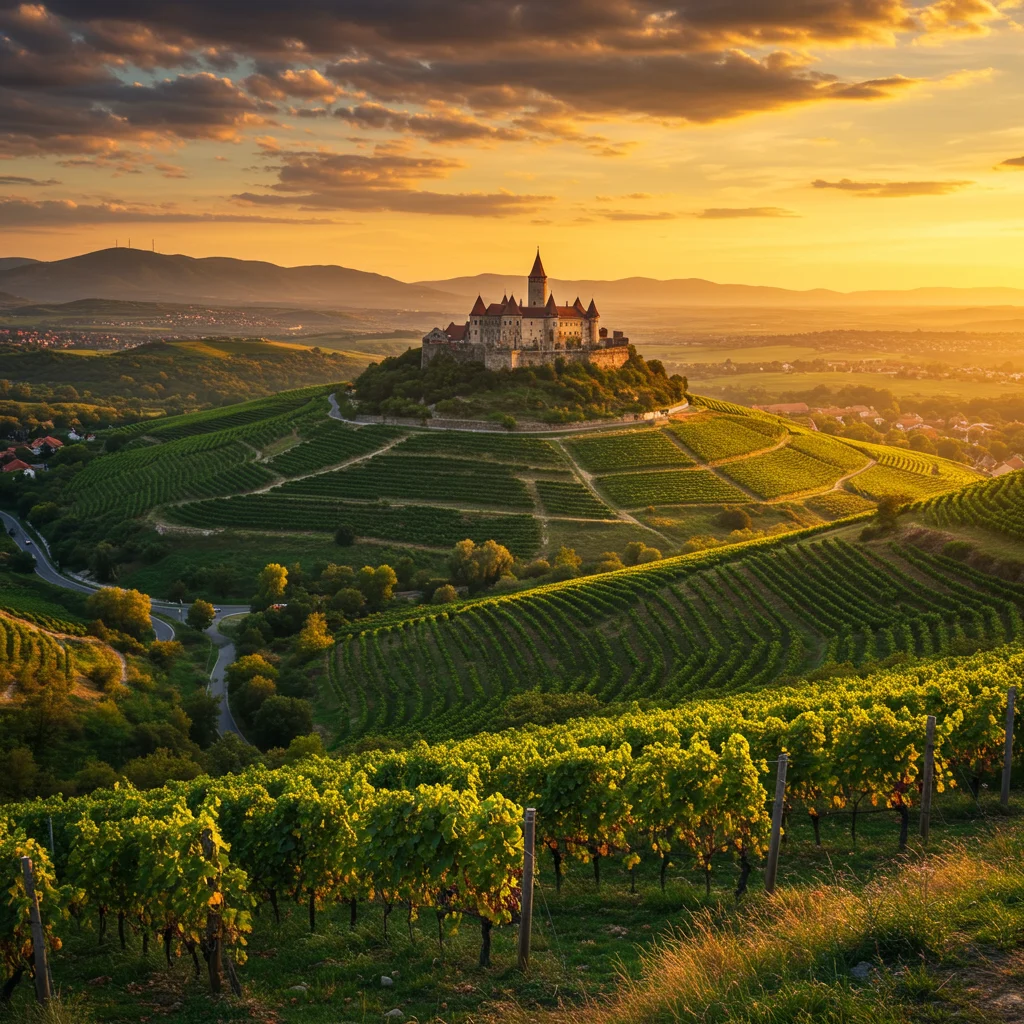
Let’s look closer at what makes this area stand out, from the storied streets of Eger to the mystical caves of Aggtelek and the world-famous vineyards of Tokaj.
What Makes Eger a Must-Visit Destination?
Eger, nestled among rolling hills, is one of Hungary’s most attractive small cities. It’s famous for its baroque architecture, heroic history, and vibrant wine scene. The town’s compact center means you can see major sights on foot, making it a pleasant place for leisurely exploration.
Here are some highlights you shouldn’t miss while in Eger.
Touring the Eger Castle
Eger Castle stands as a symbol of Hungarian resilience, particularly during the 1552 siege when locals defended the fortress against Ottoman forces. Today, you can tour the castle grounds, visit museums, and enjoy panoramic views of the city. The site often hosts historical reenactments and seasonal events, offering an engaging way to learn about Hungary’s past.
Guided tours are available for those interested in deeper historical context. Families and history enthusiasts alike will appreciate the interactive exhibits and atmospheric setting.
Wine Tasting in the Valley of the Beautiful Women
The Valley of the Beautiful Women, just outside Eger, is the heart of the region’s wine culture. Dozens of cellars line the valley, each offering tastings of local specialties like Egri Bikavér, or “Bull’s Blood.” It’s easy to spend an afternoon sampling wines, chatting with winemakers, and enjoying Hungarian hospitality.
Many cellars operate year-round, and some offer guided tastings paired with traditional snacks. This is an excellent opportunity to learn about regional wine-making traditions and discover favorites to take home.
Relaxing in Eger’s Thermal Baths
Eger’s thermal baths provide a soothing contrast to sightseeing. The town’s historic Turkish bath dates back to the 17th century, featuring domed ceilings and mineral-rich waters. Modern wellness complexes also offer pools, saunas, and spa treatments.
Whether you seek relaxation or health benefits, spending a few hours at the baths is a quintessential Hungarian experience. The tranquil setting and warm waters make it easy to unwind after a day of exploration.
Discovering Aggtelek National Park and Caves
Nature lovers will appreciate Aggtelek National Park, a UNESCO World Heritage Site famous for its extensive cave system. The park covers a vast area of forests, meadows, and karst landscapes, offering a peaceful alternative to city life.
Visitors come for guided cave tours, hiking, and wildlife observation. The park’s unique geology and biodiversity make it a highlight for both casual travelers and serious naturalists.
Exploring the Baradla Cave
The Baradla Cave is the largest and most impressive in the Aggtelek system, stretching over 25 kilometers. Guided tours take you through illuminated chambers filled with stalactites and stalagmites, some of which are millions of years old.
Different tour options suit various fitness levels and interests, from short walks to adventurous spelunking expeditions. The cave’s unique acoustics even allow for occasional underground concerts, adding a memorable twist to your visit.
Nature Trails and Wildlife Watching
Above ground, Aggtelek National Park offers well-marked trails for hiking and cycling. These routes pass through forests, meadows, and limestone formations, providing excellent opportunities for birdwatching and photography.
Wildlife enthusiasts may spot deer, wild boar, or rare birds. The park’s visitor centers provide maps and information about guided walks and seasonal events, making it easy to plan a day outdoors.
Tokaj: Hungary’s Legendary Wine Region
Tokaj holds a special place in the world of wine, known for producing the golden Tokaji Aszú. This small region in northeastern Hungary has a wine tradition dating back centuries, with cellars and vineyards that attract connoisseurs from around the globe.
Beyond wine, Tokaj’s picturesque villages and gentle hills create a tranquil setting for a leisurely visit. It’s an essential stop for anyone interested in Hungary’s culinary and cultural heritage.
Sampling Tokaji Aszú Wines
Tokaji Aszú is often called the “Wine of Kings, King of Wines.” This sweet dessert wine is made from grapes affected by noble rot, resulting in a complex, honeyed flavor. Many wineries offer tastings, allowing you to compare different vintages and styles.
Wine tours often include walks through vineyards, cellar visits, and opportunities to meet local producers. For those new to Hungarian wines, knowledgeable hosts provide insight into regional techniques and traditions.
Touring Historic Cellars
Tokaj’s cellars are as much a part of the region’s charm as its wines. Many are carved deep into volcanic rock, creating ideal conditions for aging. Guided tours reveal centuries-old tunnels lined with bottles, some covered in a patina of mold that protects the wine.
Some cellars date back to the 16th century, offering a sense of history with every glass. Don’t miss the chance to pair tastings with local cheeses or sweets, which enhance the flavors of Tokaji wines.
Lake Balaton: Hungary’s Inland Sea
Lake Balaton is Central Europe’s largest lake, often referred to as Hungary’s “inland sea.” Its shores attract visitors seeking both relaxation and recreation, with sandy beaches, lively resorts, and charming peninsulas. The lake’s mild climate and scenic surroundings make it a favorite summer destination for families and couples alike.
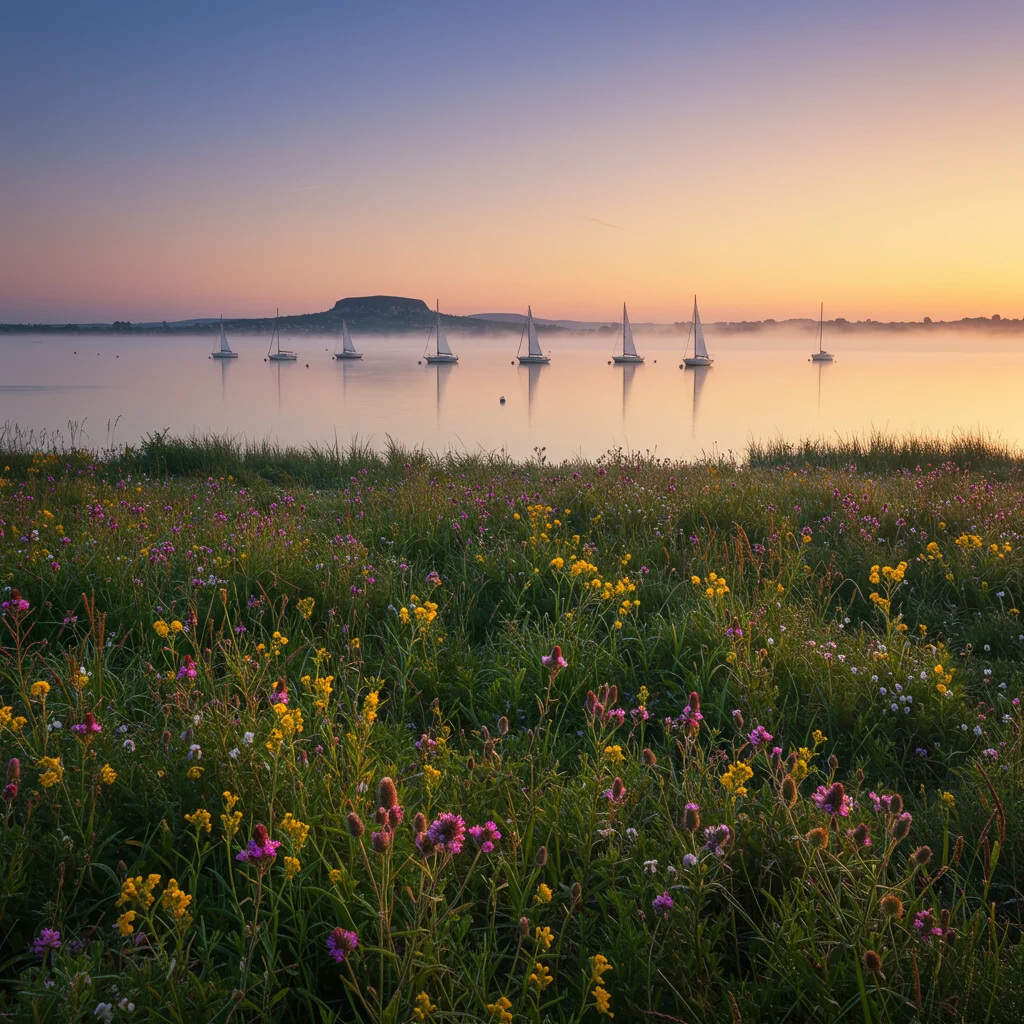
Beyond swimming and sunbathing, Lake Balaton offers a wide range of activities, from water sports to wine tasting. Let’s explore what makes this region such a perennial favorite.
What Are the Best Beaches on Lake Balaton?
Lake Balaton’s beaches cater to various tastes, from lively resorts to quiet coves. The north shore features grassy banks and deep water, while the south offers sandy, shallow stretches ideal for families. Balatonfüred, Siófok, and Keszthely are among the most popular resort towns, each with well-maintained bathing areas and amenities.
If you prefer a more tranquil setting, smaller villages along the shoreline provide peaceful spots for swimming and picnicking. Many beaches offer water slides, playgrounds, and rental services for pedal boats and kayaks, making them suitable for all ages.
Family-Friendly Activities Around Balaton
Lake Balaton is perfect for family vacations, offering a wide array of activities beyond swimming. From adventure parks to educational nature trails, there’s plenty to keep children and adults entertained. The region’s mild weather and gentle landscapes make it easy to plan a stress-free family trip.
Let’s look at some of the best options for active families.
Sailing, Windsurfing, and Water Sports
The lake’s steady breezes and calm waters create ideal conditions for sailing and windsurfing. Rental shops and sailing schools operate in major towns, offering lessons and equipment for beginners and experienced sailors alike. Organized regattas and water sports events take place throughout the summer, adding to the festive atmosphere.
For those interested in alternative water activities, stand-up paddleboarding, kayaking, and fishing are also popular. Many local companies provide guided excursions or equipment rentals, making it easy to try something new.
Cycling the Balaton Bike Ring
One of Lake Balaton’s most popular activities is cycling the Balaton Bike Ring, a well-marked route that circles the entire lake. The 200-kilometer path passes through vineyards, forests, and lakeside villages, offering spectacular views along the way.
Bike rentals and repair shops are widely available, and many accommodations cater to cyclists. Whether you ride the whole circuit or just a short stretch, the Bike Ring provides a healthy and scenic way to see the region.
Exploring Tihany Peninsula
The Tihany Peninsula juts into Lake Balaton, offering dramatic scenery and cultural landmarks. Its volcanic hills, lavender fields, and historic abbey attract visitors year-round. The area is especially popular in summer, when the lavender blooms and local markets come alive.
Tihany’s compact size makes it easy to explore on foot or by bike, with plenty of opportunities for photography and relaxation.
Visiting the Tihany Abbey
Tihany Abbey dominates the peninsula’s skyline, its twin towers visible from miles away. Founded in 1055, the abbey is both a spiritual center and a historical monument. Inside, you’ll find ornate baroque interiors, an impressive organ, and the tomb of King Andrew I.
Guided tours provide insight into the abbey’s history and role in Hungarian culture. The panoramic terrace offers sweeping views of Lake Balaton, making it a popular spot for photos.
Lavender Fields and Local Markets
Each June, Tihany’s lavender fields burst into color, creating a fragrant and photogenic landscape. The annual Lavender Festival celebrates this local crop with harvesting events, craft workshops, and culinary treats. Even outside festival season, you can visit farms, buy lavender products, and enjoy the peaceful scenery.
Tihany’s local markets are a great place to sample regional foods, purchase handmade crafts, and meet local producers. From lavender honey to artisan cheeses, the peninsula offers plenty of flavors to try.
Balatonfüred: Hungary’s Historic Spa Town
Balatonfüred is one of the lake’s oldest resorts, known for its historic villas, tree-lined promenades, and healing mineral springs. The town has welcomed visitors for centuries, offering a mix of wellness, culture, and lakeside charm.
Today, Balatonfüred remains a favorite for those seeking relaxation, cultural events, and elegant architecture. Let’s look at what makes this spa town special.
Wellness Experiences and Thermal Baths
Balatonfüred’s reputation as a spa destination dates back to the 18th century, when its mineral springs gained fame for their therapeutic properties. Modern wellness centers and historic bathhouses continue this tradition, offering a range of treatments, pools, and saunas.
Many hotels feature in-house spas, making it easy to combine sightseeing with relaxation. Whether you seek medical therapies or simple pampering, Balatonfüred’s wellness options cater to all preferences.
Promenades and Historic Villas
The town’s lakeside promenade, Tagore Sétány, is perfect for a leisurely stroll. Lined with statues, gardens, and historic buildings, it offers lovely views and a peaceful atmosphere. The promenade is named after Rabindranath Tagore, who visited the town and planted a tree here in 1926.
Balatonfüred’s 19th-century villas and grand hotels recall its golden age as a resort. Many have been restored and now house museums, galleries, or elegant accommodations, adding to the town’s timeless appeal.
Western Hungary: Castles, Spas, and Nature
Western Hungary is rich in architectural heritage, spa towns, and natural beauty. The region borders Austria and Slovenia, resulting in a unique blend of cultural influences. Visitors find well-preserved medieval towns, lush forests, and some of Europe’s best thermal lakes.
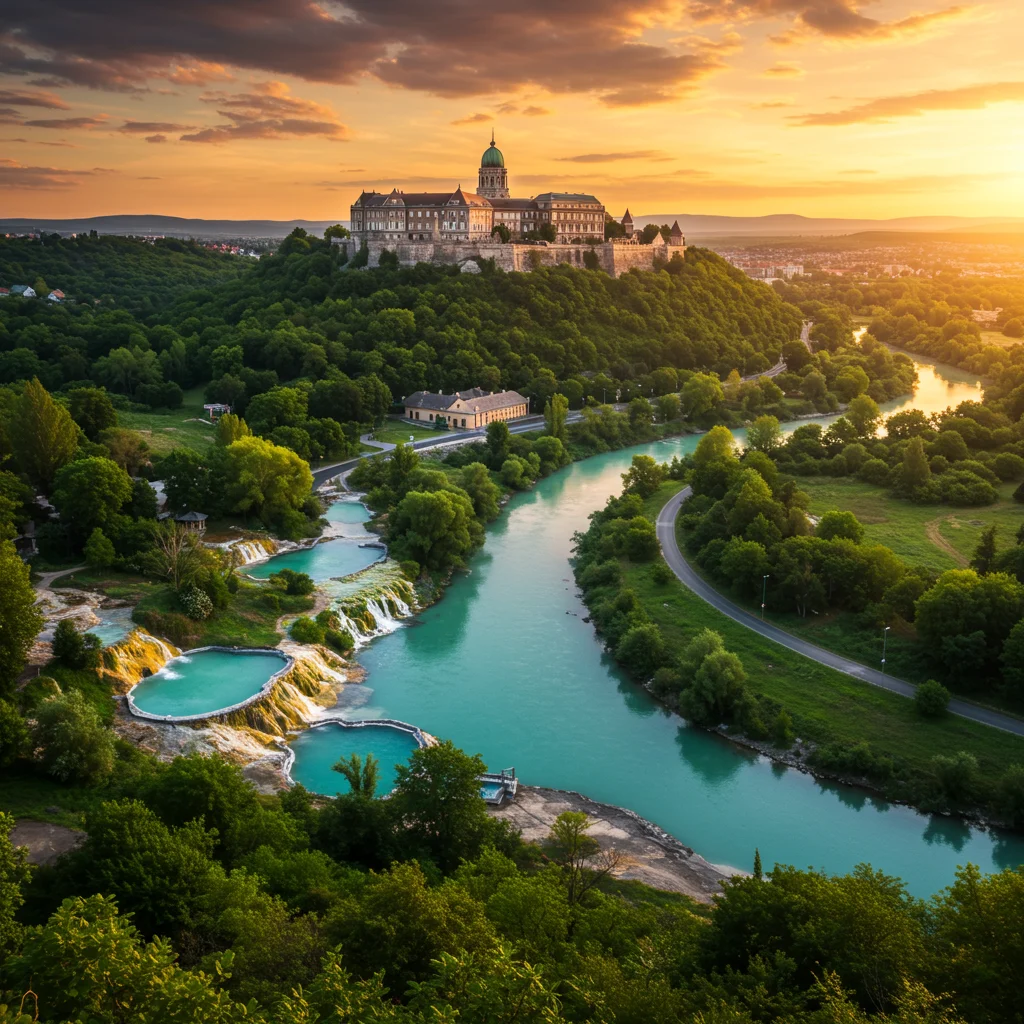
Whether you’re interested in history, wellness, or gastronomy, western Hungary offers plenty of reasons to linger. Let’s examine some of the highlights.
What to Do in Pécs: Culture and Heritage
Pécs is a vibrant university city with a Mediterranean feel, thanks to its mild climate and lively café culture. The city’s rich history is reflected in its Roman ruins, Ottoman mosques, and early Christian tombs, making it a UNESCO World Heritage Site.
Pécs is also known for its art scene, with galleries, museums, and public sculptures throughout the city. Its relaxed pace and friendly atmosphere make it a pleasant stop on any Hungarian itinerary.
Exploring Early Christian Necropolis
The Early Christian Necropolis of Pécs is one of Hungary’s most important archaeological sites. Dating back to the 4th century, this underground complex features elaborately decorated tombs and chapels. Guided tours provide insight into the region’s ancient history and the spread of Christianity in Central Europe.
The site’s frescoes and mosaics are remarkably well-preserved, offering a glimpse into early religious art. The necropolis is part of the UNESCO-listed monuments of Pécs and a must-see for history enthusiasts.
Visiting the Mosque of Pasha Qasim
The Mosque of Pasha Qasim is a striking reminder of Hungary’s Ottoman past. Built in the 16th century, the mosque now functions as a Catholic church but retains its original dome and Islamic architectural elements. Its fusion of styles and rich decoration make it a unique landmark in Pécs.
Visitors can admire the mosque’s interior, learn about its history, and attend concerts or cultural events held in the space. It stands as a symbol of Pécs’s diverse heritage.
Savouring Local Cuisine and Cafés
Pécs’s culinary scene reflects its multicultural influences, with Mediterranean flavors, Hungarian classics, and creative modern dishes. The city is known for its lively café culture, with outdoor terraces and artisan bakeries lining the main squares. You’ll find everything from hearty stews to delicate pastries on local menus.
Sampling regional wines, such as those from the Villány area, is highly recommended. Many restaurants feature seasonal specialties and locally sourced ingredients, making dining a highlight of your visit.
Sopron: Where History Meets Wine
Sopron sits near the Austrian border, blending Central European charm with a strong wine tradition. The town’s medieval center, winding streets, and colorful houses create a fairy-tale atmosphere. Sopron is also known for its Kékfrankos wine, a robust red that pairs perfectly with local cuisine.
Walking through Sopron, you’ll encounter Roman ruins, Gothic churches, and lively wine bars. The town’s friendly spirit and rich heritage make it a rewarding destination for culture lovers.
Walking Along the Medieval City Walls
Sopron’s medieval city walls offer a glimpse into its turbulent history. Portions of the walls and gates remain intact, and walking paths provide scenic views over the town and surrounding vineyards. Informational plaques describe the history of each section, making a stroll both pleasant and educational.
Don’t miss the Firewatch Tower, which offers panoramic views and houses a small museum. The tower is a symbol of Sopron and a favorite spot for photos.
Tasting Sopron Kékfrankos Wines
Wine is central to Sopron’s identity, and Kékfrankos is the star. Many local cellars and wine bars offer tastings, often accompanied by traditional snacks. Guided wine tours introduce you to the region’s grape-growing history and production techniques.
Annual festivals celebrate the grape harvest, attracting visitors with music, food, and open cellars. Whether you’re a wine connoisseur or a casual traveler, sampling Sopron’s reds is a highlight of any visit.
Heviz: Europe’s Largest Thermal Lake
Heviz is famous for its natural thermal lake, the largest of its kind in Europe. The lake’s warm, mineral-rich waters attract visitors seeking therapeutic treatments and relaxation. Surrounded by lush parks and modern resorts, Heviz offers a tranquil escape from city life.
The town’s wellness culture combines centuries-old traditions with contemporary comforts, making it a favorite for health seekers and spa enthusiasts.
Therapeutic Bathing in Lake Heviz
Lake Heviz maintains a comfortable temperature year-round, thanks to continuous geothermal activity. Bathing in the lake is said to relieve joint pain and promote overall well-being. Floating among water lilies in the open-air pools is a unique experience, especially in winter when steam rises from the surface.
Facilities include changing rooms, saunas, and medical centers offering specialized treatments. Doctors and therapists are available for consultations, ensuring a safe and beneficial visit.
Wellness Resorts and Spa Treatments
Heviz’s resorts range from historic bathhouses to luxury wellness hotels. Most offer a variety of spa treatments, including massages, mud wraps, and hydrotherapy. Packages often combine accommodation, meals, and wellness services, making planning straightforward.
Many resorts cater to international guests, with multilingual staff and customized programs. Whether you seek medical therapies or simple relaxation, Heviz’s spa culture is among the best in Europe.
Southern Hungary: Culture, Festivals, and Nature
Southern Hungary is known for its sunny climate, lively festivals, and rich folk traditions. The region’s cities and towns blend architectural beauty with a laid-back atmosphere, while the countryside offers ample opportunities for nature-based activities.
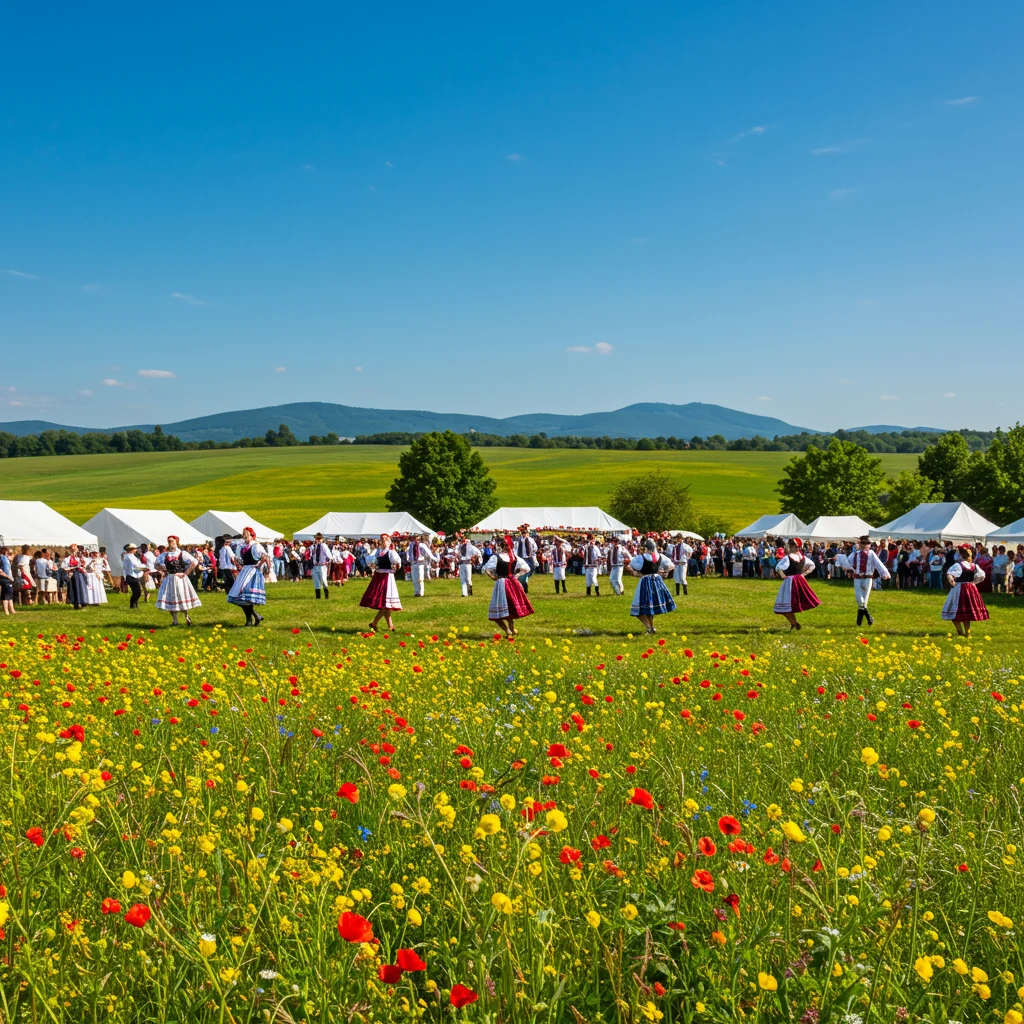
Let’s highlight two standout destinations: Szeged and Kecskemét, both known for their unique cultural offerings and welcoming spirit.
Why Visit Szeged, the City of Sunshine?
Szeged is Hungary’s third-largest city, renowned for its sunny weather, Art Nouveau architecture, and student life. The city straddles the Tisza River, with leafy boulevards, grand squares, and a friendly atmosphere. Szeged’s calendar is packed with festivals, concerts, and open-air events, making it lively year-round.
Its culinary scene, especially the spicy fish soup known as halászlé, is another draw for food lovers.
Exploring Art Nouveau Architecture
Szeged’s city center features some of Hungary’s finest Art Nouveau buildings, many of which were constructed after a devastating flood in 1879. The Reök Palace, with its floral motifs and curving lines, is a standout example. Guided walking tours are available to help visitors appreciate the city’s architectural gems.
Public buildings, churches, and even coffeehouses display distinctive Art Nouveau elements, making Szeged a delight for fans of design and history.
Open-Air Festivals and Events
Szeged is famous for its open-air events, especially the Szeged Open-Air Festival held each summer in Dóm Square. The festival features operas, musicals, and theatrical performances under the stars, drawing audiences from across the country.
Other annual events include the Szeged Youth Days music festival and the International Tisza Fish Soup Festival. These gatherings celebrate local traditions and create a festive atmosphere throughout the city.
Discovering the Gem of Kecskemét
Kecskemét sits at the heart of Hungary’s Great Plain, known for its Art Nouveau buildings, folk music, and fruit brandies. The town’s colorful center is dotted with ornate facades, lively markets, and music venues. Kecskemét’s friendly vibe and cultural richness make it a rewarding stop for travelers seeking a taste of Hungarian tradition.
Let’s look at what makes Kecskemét unique.
Folk Art and Music Traditions
Kecskemét is a hub for Hungarian folk art and music. The town hosts regular concerts, dance performances, and craft fairs celebrating local traditions. The Museum of Hungarian Naive Artists and the Kodály Institute highlight the region’s artistic heritage.
Workshops and classes are available for visitors interested in learning traditional crafts or instruments. These experiences offer a hands-on connection to Hungary’s living culture.
Sampling Local Palinka
Kecskemét is famous for its fruit brandies, especially apricot palinka. Distilleries and tasting rooms invite visitors to sample a range of flavors, from plum to cherry. Many producers offer guided tours explaining the distillation process and sharing the history of palinka in Hungarian society.
Palinka is often served at celebrations and festivals, making it an integral part of local hospitality. Be sure to sample responsibly, as these spirits pack a punch.
The Great Hungarian Plain (Alföld): Rural Adventures
The Great Hungarian Plain, or Alföld, covers much of eastern and southern Hungary. This vast region is characterized by open landscapes, traditional villages, and a strong agricultural heritage. Visitors find unique rural experiences, from horseback riding to folk festivals and hearty local cuisine.
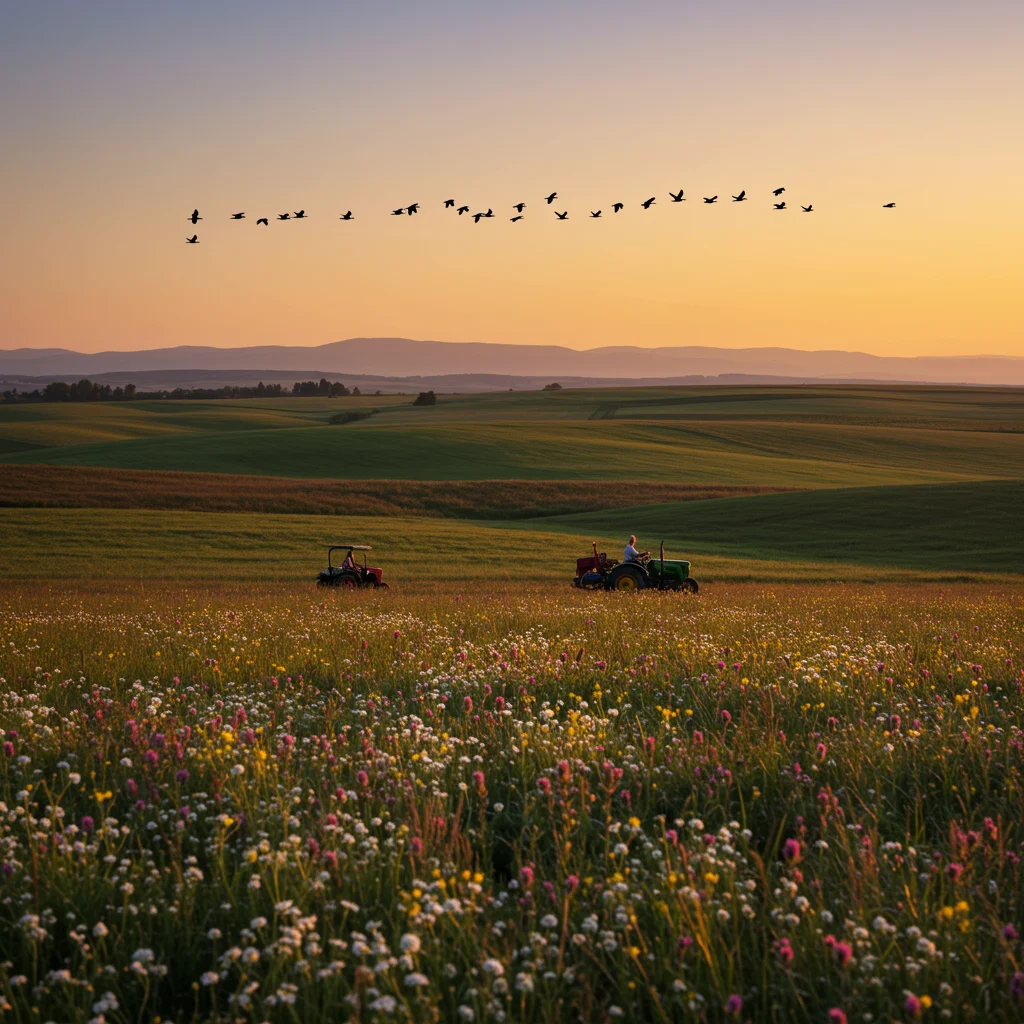
The Alföld is ideal for those who appreciate wide-open spaces and authentic rural culture. Let’s highlight some memorable activities and destinations in this area.
Experiencing Traditional Hungarian Horse Shows
Horsemanship has deep roots in the Hungarian Plain, with traditions dating back to Magyar tribes. Today, visitors can attend horse shows featuring skilled riders, acrobatic displays, and demonstrations of traditional herding techniques. These performances often take place in open-air arenas or at rural inns known as csárdas.
Horse shows offer a glimpse into the region’s history and provide family-friendly entertainment. Many venues also offer horseback riding lessons and carriage rides through the countryside.
Hortobágy National Park: UNESCO World Heritage Site
Hortobágy National Park is the largest protected area in Hungary and a UNESCO World Heritage Site. Known for its endless grasslands, wetlands, and traditional shepherd culture, the park is a haven for nature lovers and birdwatchers.
The park’s visitor centers offer information about guided tours, wildlife observation, and cultural programs. Let’s look at some of the best ways to experience Hortobágy.
Birdwatching and Wildlife Safaris
Hortobágy is a paradise for birdwatchers, with over 340 species recorded. Spring and autumn migrations bring flocks of cranes, geese, and raptors, creating spectacular sights. Observation towers and guided safaris make it easy to spot rare species and learn about the region’s unique ecology.
Wildlife tours often include visits to remote wetlands, where you may see wild horses, water buffalo, and traditional Hungarian grey cattle. Local guides provide expert commentary and ensure responsible wildlife viewing.
Staying in a Traditional Csárda (Inn)
For a true taste of Alföld hospitality, consider staying in a traditional csárda. These rural inns offer hearty meals, folk music, and comfortable accommodations in a rustic setting. Many csárdas feature horseback riding, carriage tours, and demonstrations of shepherd skills.
Even if you don’t stay overnight, visiting a csárda for lunch or dinner is a memorable way to experience regional cuisine and culture.
Unique Experiences Across Hungary
Hungary’s countryside is filled with unique experiences that go beyond sightseeing. From countryside spas to food festivals and outdoor adventures, there’s much to enjoy for travelers with varied interests. This section highlights some of the most memorable ways to enrich your trip outside Budapest.
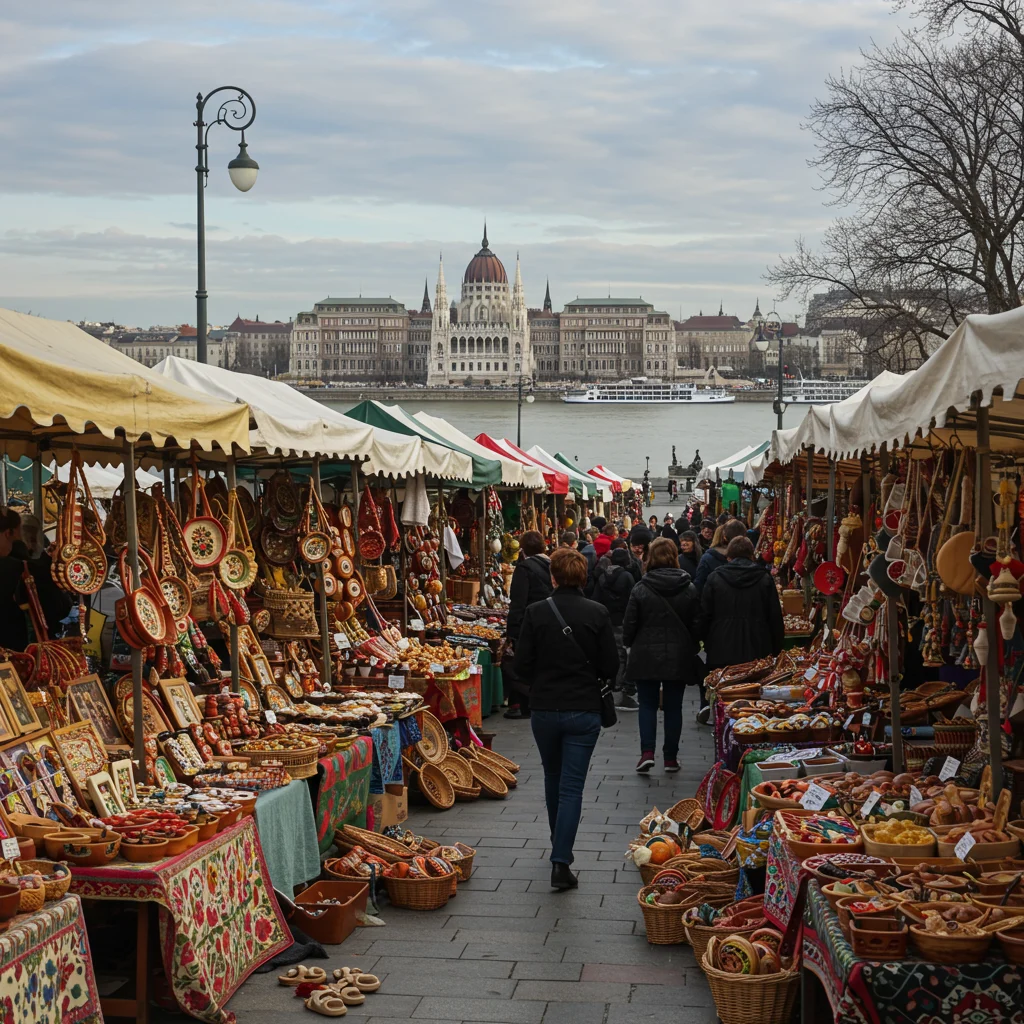
Whether you’re seeking wellness, culinary delights, or active pursuits, Hungary’s regions provide plenty of options for an authentic and enjoyable journey.
How to Enjoy Hungary’s Thermal Baths Beyond Budapest?
While Budapest is famous for its thermal baths, many of the country’s best spas are found in smaller towns and rural areas. These baths range from historic Turkish-style pools to modern wellness complexes, each offering unique mineral compositions and healing properties. Bathing culture is deeply rooted in Hungarian life and a highlight of any visit.
Let’s look at some of the top countryside spa experiences.
Best Countryside Spas and Wellness Retreats
Heviz, mentioned earlier, stands out for its natural thermal lake and comprehensive wellness services. Other notable spas include the Zsóry Bath in Mezőkövesd, renowned for its sulfur-rich waters, and the Miskolctapolca Cave Bath, where you can swim in naturally heated pools inside a limestone cave.
For those seeking a quieter atmosphere, smaller towns such as Bük and Sárvár offer high-quality facilities with fewer crowds. Many spa hotels provide package deals that combine accommodation, meals, and treatments, making them a convenient choice for a wellness-focused getaway.
Hungarian Cuisine: What Local Dishes Should You Try?
Hungarian cuisine is hearty, flavorful, and shaped by centuries of regional traditions. Each area has its own specialties, from spicy stews to sweet pastries and robust wines. Sampling local dishes is an essential part of any trip, offering insights into the country’s agricultural heritage and culinary creativity.
Let’s highlight some must-try foods and where to find the best local flavors.
Must-Try Regional Specialties
Goulash, the iconic Hungarian stew, is found throughout the country, but each region adds its own twist. In the south, try spicy fish soup (halászlé), while the north is known for stuffed cabbage and savory pastries. Hortobágyi palacsinta, a savory pancake filled with meat and topped with paprika sauce, is a national favorite.
Don’t miss desserts like dobos torte, chimney cakes, and poppy seed rolls. Many local restaurants and markets serve seasonal specialties, reflecting the rhythms of rural life. For more culinary inspiration, you might enjoy reading about food-focused tours in other destinations, such as those highlighted in Miami Uncovered: Vibrant Tours Beyond the Beach.
Best Rural Markets and Food Festivals
Hungary’s rural markets are a feast for the senses, offering fresh produce, homemade cheeses, sausages, and baked goods. Markets in towns like Kecskemét, Szeged, and Debrecen are lively places to sample and purchase local products. Many regions host food festivals celebrating everything from paprika and sausage to cherries and lavender.
Attending a food festival or visiting a weekly market provides a chance to meet producers, taste regional specialties, and pick up unique souvenirs. These gatherings are a highlight of countryside travel, fostering connections between visitors and local communities.
Outdoor Activities for Adventure Seekers
Hungary’s varied landscapes offer plenty of opportunities for active travelers. From forested hills to open plains and winding rivers, the countryside is ideal for hiking, cycling, paddling, and fishing. Outdoor activities provide a healthy way to experience the natural beauty and rural life of Hungary.
Here are some of the best ways to stay active during your visit.
Hiking and Biking Trails
Northern Hungary’s Bükk and Mátra mountains feature well-marked hiking trails suitable for all levels. The National Blue Trail, one of Europe’s oldest long-distance routes, passes through scenic villages and protected areas. Cyclists can enjoy dedicated bike paths around Lake Balaton, through the wine country of Tokaj, or along the Danube Bend.
Trail maps and rental services are widely available, and many regions offer guided tours. For those who appreciate historic walks, you might find inspiration in journeys such as those described in Wander Through History on an Old San Juan Stroll.
Kayaking, Canoeing, and Fishing
Hungary’s rivers and lakes are perfect for water-based adventures. The Tisza and Dráva Rivers offer tranquil routes for kayaking and canoeing, with rental services and organized tours available. Lake Tisza, with its maze of islands and wetlands, is a hotspot for both paddling and birdwatching.
Fishing is popular on many lakes and rivers, with permits easily obtained from local shops or online. Whether you prefer a peaceful day on the water or a guided adventure, Hungary’s waterways provide memorable experiences for nature lovers.
Hungary’s Hidden Villages and Small Towns
Beyond the well-known cities, Hungary is dotted with charming villages and small towns that preserve traditional ways of life. These places offer a slower pace, authentic architecture, and a chance to connect with local customs. Visiting these communities rewards travelers with unique memories and a deeper understanding of Hungarian culture.
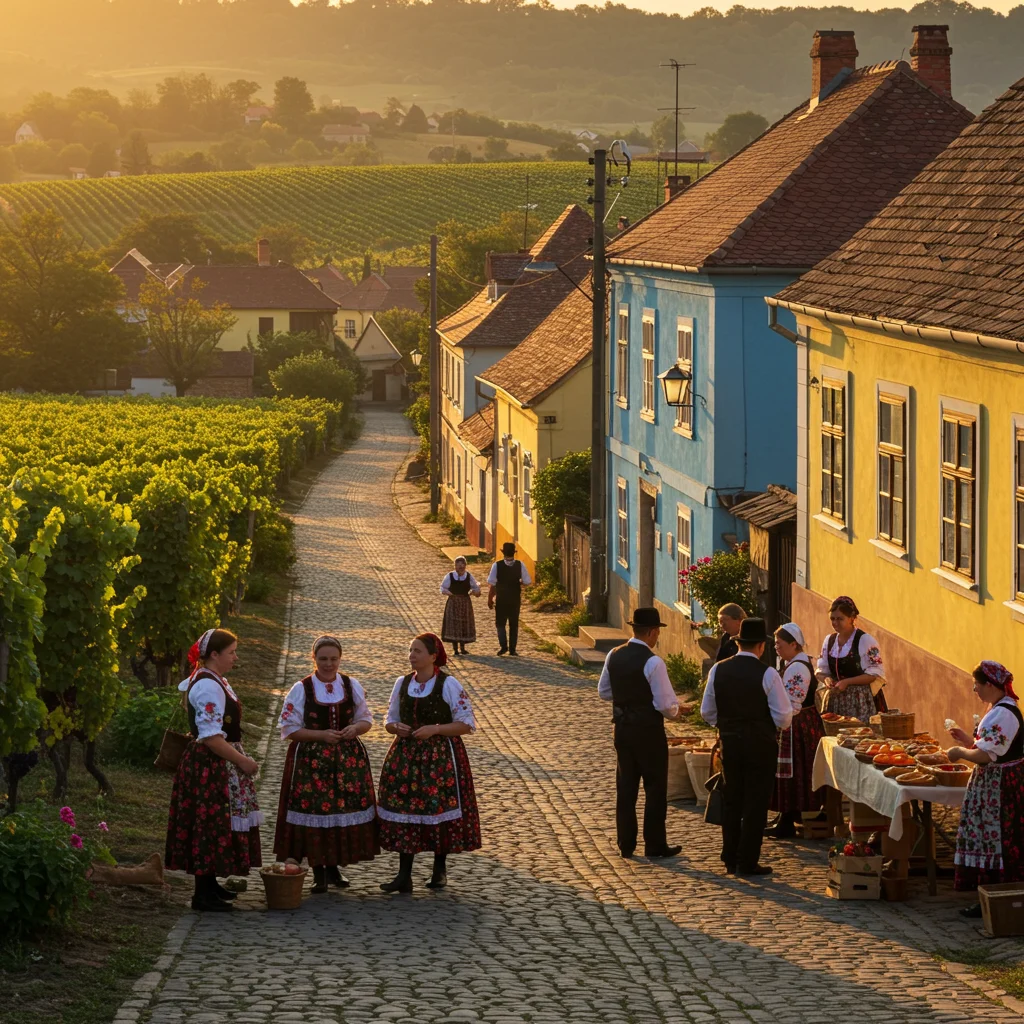
Let’s highlight two particularly noteworthy destinations.
Hollókő: A Living Folk Village
Hollókő is a UNESCO World Heritage Site, famed for its well-preserved traditional houses and vibrant folk culture. The village hosts regular festivals, craft workshops, and folk dance performances, keeping centuries-old traditions alive. Many residents still wear traditional dress on holidays and participate in community celebrations.
Visitors can tour the village’s open-air museum, sample homemade foods, and purchase hand-crafted souvenirs. Hollókő is especially lively during Easter, when locals stage colorful processions and folk rituals.
Szentendre: Art, Culture, and Riversides
Szentendre is a picturesque town on the banks of the Danube, just north of Budapest. Known for its baroque houses, cobbled streets, and thriving art scene, Szentendre is a favorite weekend destination for locals and tourists alike. The town’s galleries, museums, and artisan shops create a creative and welcoming atmosphere.
Szentendre’s riverside promenades and outdoor cafés are perfect for relaxing after a day of sightseeing. The town also hosts regular festivals and cultural events, adding to its appeal as a year-round destination.
Practical Tips for Traveling Beyond Budapest
Venturing outside Budapest opens up a world of new experiences, but it also requires some practical planning. Transportation, timing, and cultural etiquette can vary across regions. Here, we offer advice to help you make the most of your journey across Hungary, ensuring a smooth and enjoyable trip.
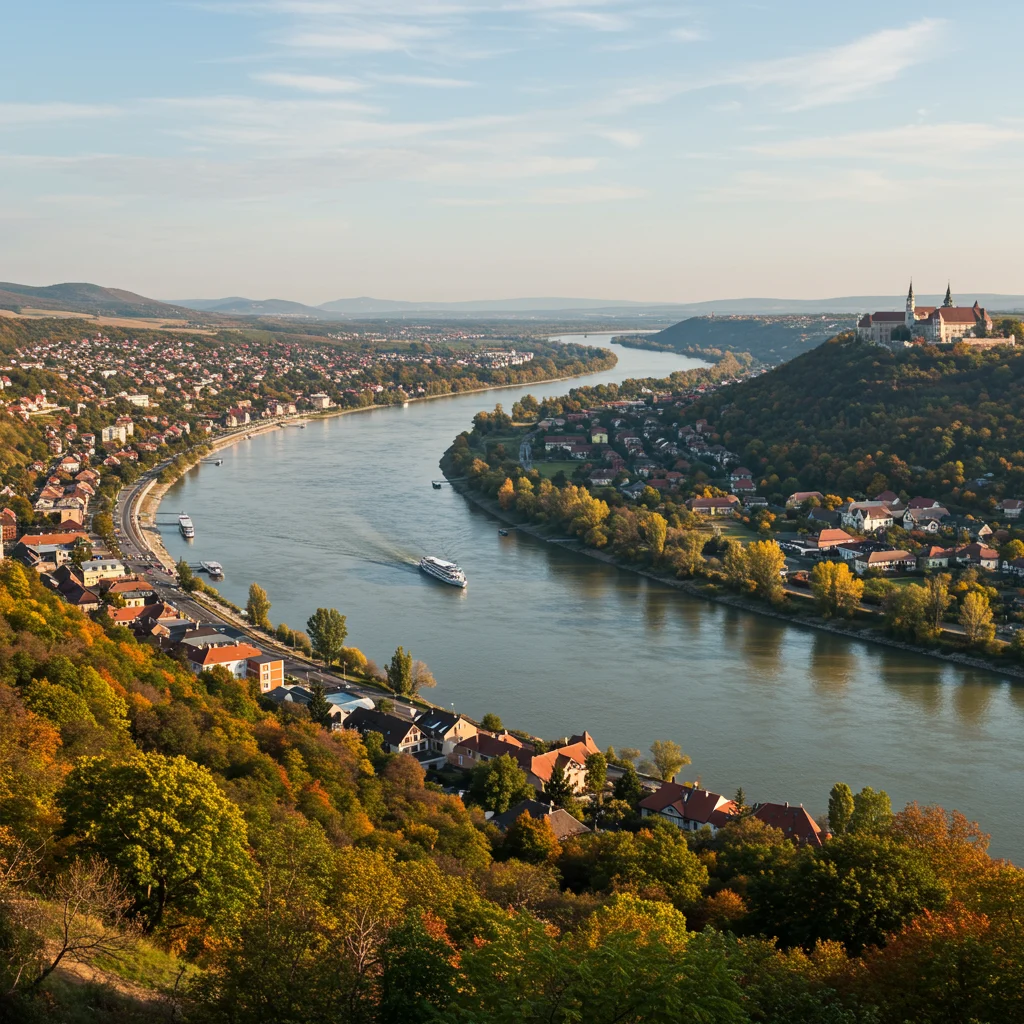
These tips will help you navigate local customs, get around efficiently, and choose the best time to visit different areas.
How to Get Around Hungary
Hungary’s public transportation network connects most towns and regions, with trains and buses providing reliable service. Trains are generally the fastest and most comfortable option for longer distances, while buses reach smaller villages and rural areas. Car rentals offer flexibility for those who want to set their own pace or visit off-the-beaten-path locations.
Major towns often have bike rentals and local taxi services. It’s wise to check schedules in advance, especially for rural routes with limited service. For inspiration on how to structure day trips in other European countries, consider reading about efficient sightseeing in Venice in a Day: Explore the City of Canals by Tour.
Best Times to Visit Different Regions
Hungary’s climate varies by region, so timing your visit can enhance your experience. Spring (April to June) and autumn (September to October) offer pleasant weather, fewer crowds, and colorful landscapes. Summer is ideal for lake holidays and festivals, but some areas can be hot and busy.
Winter brings Christmas markets, spa visits, and festive events, especially in towns like Eger and Pécs. Check local calendars for harvest festivals, music events, and food fairs, which add extra excitement to your trip.
Safety and Cultural Etiquette
Hungary is considered a safe country for travelers, with low crime rates in most areas. Standard precautions apply, such as safeguarding valuables and being mindful of traffic in busy towns. Rural areas are generally peaceful, but it’s wise to respect private property and follow local guidelines when hiking or cycling.
Cultural etiquette emphasizes politeness and respect for local customs. Greetings are formal, and it’s customary to say “hello” when entering shops or restaurants. Tipping is common in restaurants and for services. Learning a few basic Hungarian phrases can go a long way in making connections with locals.
Conclusion: Embracing the Full Hungarian Experience
Hungary’s regions offer a wealth of experiences that go far beyond the capital. From the wine cellars of Tokaj and the beaches of Lake Balaton to the folk traditions of Hollókő and the wellness resorts of Heviz, every corner of the country has its own treasures. Traveling outside Budapest allows you to see a more authentic side of Hungary, rich in history, culture, and natural beauty.
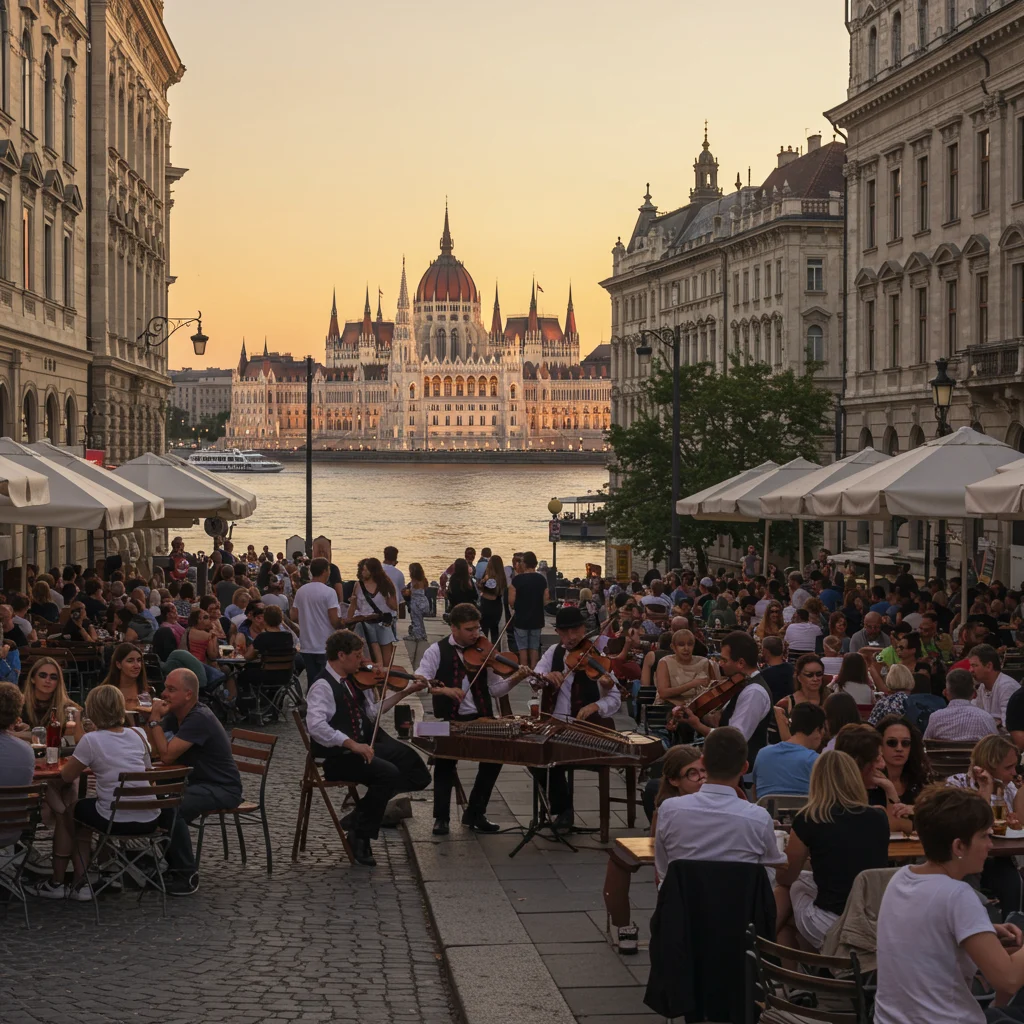
For those interested in combining their Hungarian journey with trips to other European destinations, you might enjoy reading about sports experiences in Roar of Rome: What to Expect at Stadio Olimpico or scenic adventures along the coast as described in Winding Wonder: Discover the Soul of the Amalfi Coast.
If you’re ready to experience the full diversity of Hungary, let Tour Cuts help you plan your journey. Visit Tour Cuts for more travel inspiration, practical tips, and curated itineraries across Europe and beyond.

